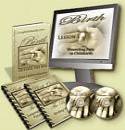Hep B Vaccine
What is it?
The Hep B vaccine, the first of many such vaccines that are routinely administered to US children, is injected into the newborn shortly after birth. It is given over three doses: the minimum recommended dosing intervals are 4 weeks between the 1st and 2nd and 8 weeks between the 2nd and 3rd. The minimum interval between the 1st and 3rd dose is 16 weeks. The injection is given in the thigh or the upper arm muscle for infants whereas the biceps are the preferable injection sites for adults/teens.
Hepatitis B is caused by virus which attacks the liver. Transmission occurs through several sources, including:
- blood born contact
- unprotected sex with an infected person
- sharing drug paraphernalia
- infected mother to baby during birth
- from workplace accidental exposure to sharps or other infected items
Those are greatest risk for infection include:
- Intravenous drug users
- Contact with chronically infected people
- Multiple sex partners
- Diagnosis of an STD
- Homosexual activity
- Healthcare workers
- Patients who receive hemodialysis
- Children of infected mothers
- Residence in areas of high infection
Who should not be vaccinated?
The Hep B vaccine is grown in a yeast culture, so persons who are allergic to yeast should not receive the vaccine.
Precautions
- When pregnant, get a blood test for Hep B. Infants born to infected mothers should be given HBIG (hepatitis B immune globulin) and vaccinated within 12 hours after birth.
- Carefully consider the advisability of getting tattoo or body piercing during pregnacy. If you do choose to do so, ensure the artist uses the appropriate universal precautions to prevent the transmission of infection.
- If you work in an at-risk profession, observe barrier precautions and follow all approved safety precautions for handling and removal of sharps.< /li>
Why is The Hep B Vaccine routinely given at birth?
The reasoning for vaccination at birth is the theory that widespread prevention will occur by catching every baby early. Additionally, prenatal screening for maternal infection also reveals those infants truly at risk. According to the World Health Organization position paper on the Hep B vaccine, "In countries where a lower proportion of HBV infections are acquired perinatally, the relative contribution of perinatal HBV infection to the overall disease burden, and the feasibility and cost-effectiveness of providing vaccination at birth, should be carefully considered before a decision is made on the optimal vaccination schedule."
References
Lee C, Gong Y, Brok J, Boxall EH, Gluud C. Hepatitis B immunisation for newborn infants of hepatitis B surface antigen-positive mothers. Cochrane Database of Systematic Reviews 2006, Issue 2. Art. No.: CD004790. DOI: 10.1002/14651858.CD004790.pub2.CDC. Thimerosal in vaccines: a joint statement of the American Academy of Pediatrics and the Public Health Service. MMWR 1999;48:563-5.
American Academy of Pediatrics. Thimerosal in vaccines: an interim report to clinicians. AAP News 1999;15:10-2.
American Academy of Family Physicians. Policy statement of the American Academy of Family Physicians on thimerosal in vaccines, July 8, 1999. Available at http://www.aafp.org/policy/camp/20.html. Accessed September 3, 1999.
CDC. Implementation guidance for immunization grantees during the transition period to vaccines without thimerosal, July 14, 1999. Available at http://www.cdc.gov/nip/news/thimerosal-guidance.html. Accessed September 3, 1999.
Advisory Committee on Immunization Practices. Hepatitis B virus: a comprehensive strategy for eliminating transmission in the United States through universal childhood vaccination. MMWR 1991;40(no. RR-13).
CDC. Update: recommendations to prevent hepatitis B virus transmission--United States. MMWR 1999;48:33-4.
CDC. Health information for international travel 1999-2000. Atlanta, Georgia: US Department of Health and Human Services, 1999:98-102.
Margolis HS, Coleman PJ, Brown RE, Mast EE, Sheingold SH, Arevalo JA. Prevention of hepatitis B virus transmission by immunization: an economic analysis of current recommendations. JAMA 1995;274:1201-8.
Return from Hep B Vaccine to Newborn Baby Care Procedures
Return to Giving Birth Naturally Home
Page Last Modified by Catherine Beier, MS, CBE
Most Popular
How to Use Acupressure to Induce Labor
Childbirth Relaxation Script MP3s
Nutrition During Pregnancy - Nix the Notion of Eating for Two
Looking for a Birth Professional? Search our Provider Directory
Online Childbirth Classes
Choose 7 week, 12 week, or Self- Paced online childbirth classes available wherever and whenever you need them.
Featured Birth Story
Vanessa's natural birth story shows that when birth is left alone to proceed as it should, it waits for no one - not even doctors or midwives.
Free Pregnancy Tickers
Create a free pregnancy ticker to post on your blog, website, Facebook profile or favorite social media...




